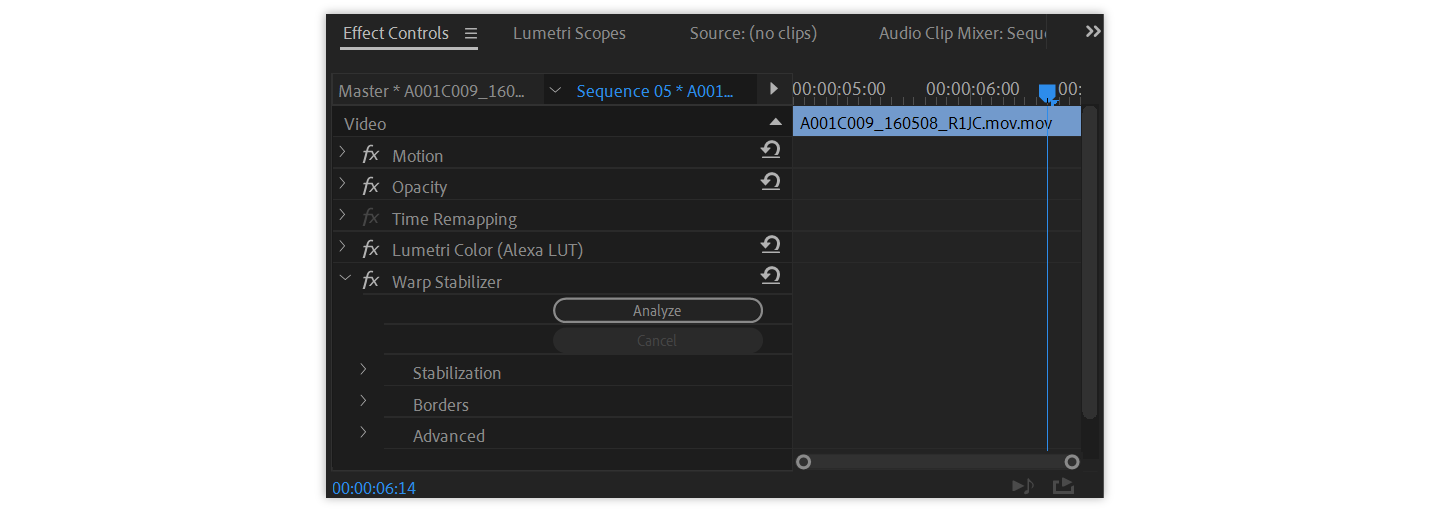

Warp stabilizer requires clip dimensions to match sequence (fix by nesting) full#
Note: When you begin tracking, After Effects sets the quality of the motion source layer to Best and the resolution to Full in the Composition and Layer panels, which makes the tracked feature easier to find and enables subpixel processing and positioning. The attach point designates the place of attachment for the target -the layer or effect control point to synchronize with the moving feature in the tracked layer. Confining the search to a small search region saves search time and makes the search process easier, but runs the risk of the tracked feature leaving the search region entirely between frames. The tracked feature needs to be distinct only within the search region, not within the entire frame. Warp Stabilizer requires clip dimensions to match sequence, Fix by nesting (Premiere Pro, 2 methods) The search region defines the area that After Effects will search to locate the tracked feature. After Effects must be able to clearly identify the tracked feature throughout the duration of the track, despite changes in light, background, and angle. The feature region should surround a distinct visual element, preferably one object in the real world. The feature region defines the element in the layer to be tracked. Each track point contains a feature regiona search regionand an attach point. You specify areas to track by setting track points in the Layer panel. As with all properties, you can modify, animate, manage, and link tracking properties in the Timeline panel. Random motion, such as from the jostling of a handheld camera, can make it difficult for many compression algorithms to compress your video. Note: Depending on the encoder you use, it is possible to decrease the size of your final output file by stabilizing motion footage. Stabilizing footage to hold a moving object stationary in the frame to examine how a moving object changes over time, which can be useful in scientific imaging work.

Linking the position of a tracked object to other properties, such as making stereo audio pan from left to right as a car races across the screen.

Animating a still image to match the motion of action footage, such as making a cartoon bumblebee sit on a swaying flower. Combining elements filmed separately, such as adding video to the side of a moving city bus or a star to the end of a sweeping wand. Note: You can stabilize shaky footage a lot easier using the Warp Stabilizer. Note: In After Effects, you can track camera motion and place 3D objects in 2D footage much more easily using the 3D camera tracker. You can also track multiple objects in the same layer. You can apply the same tracking data to different layers or effects. After Effects tracks motion by matching image data from a selected area in a frame to image data in each succeeding frame. You can link properties to tracking data using expressions, which opens up a wide variety of uses. You can also stabilize motion, in which case the tracking data is used to animate the tracked layer to compensate for movement of an object in that layer. With motion tracking, you can track the movement of an object and then apply the tracking data for that movement to another object-such as another layer or an effect control point-to create compositions in which images and effects follow the motion.


 0 kommentar(er)
0 kommentar(er)
